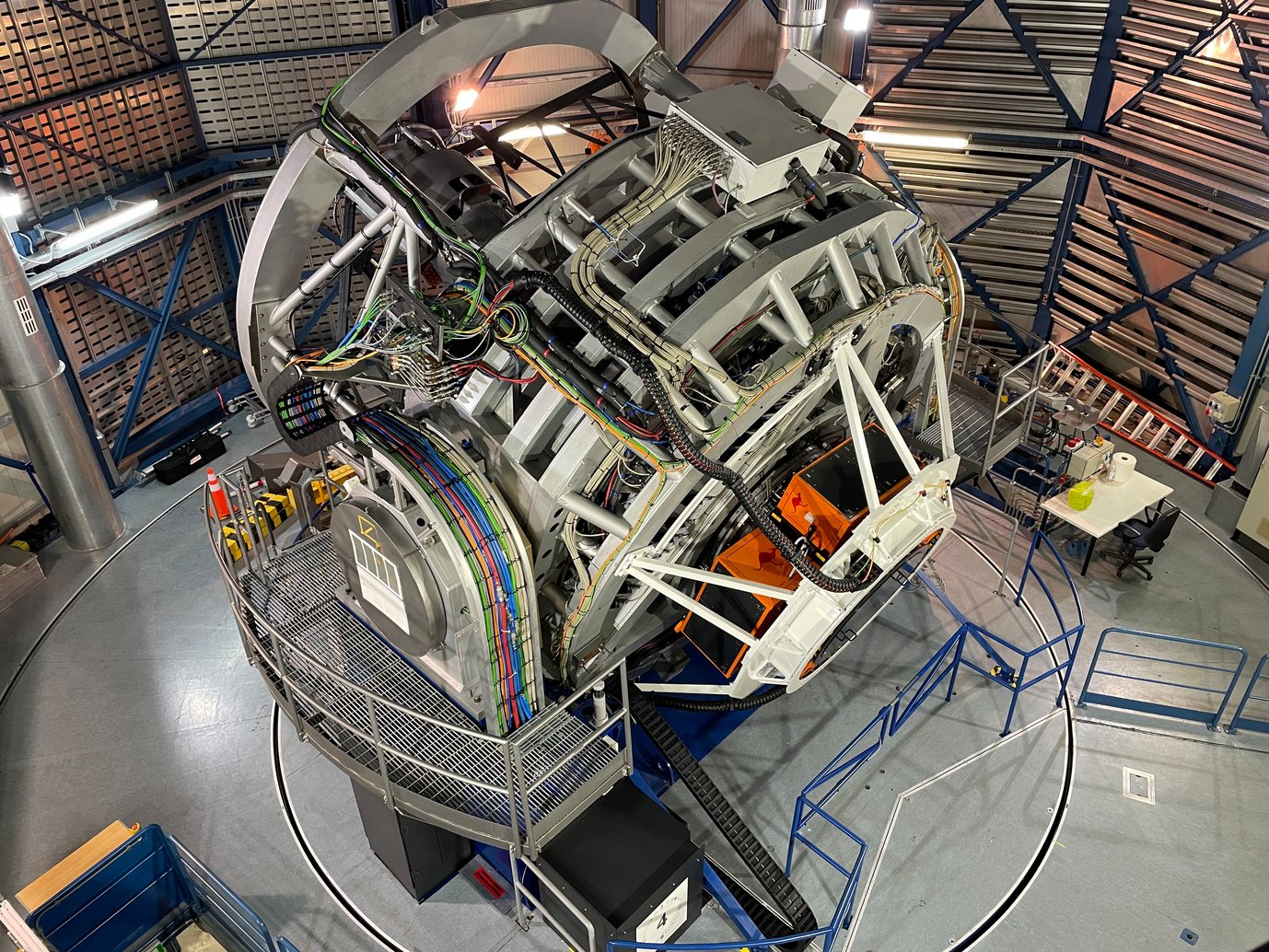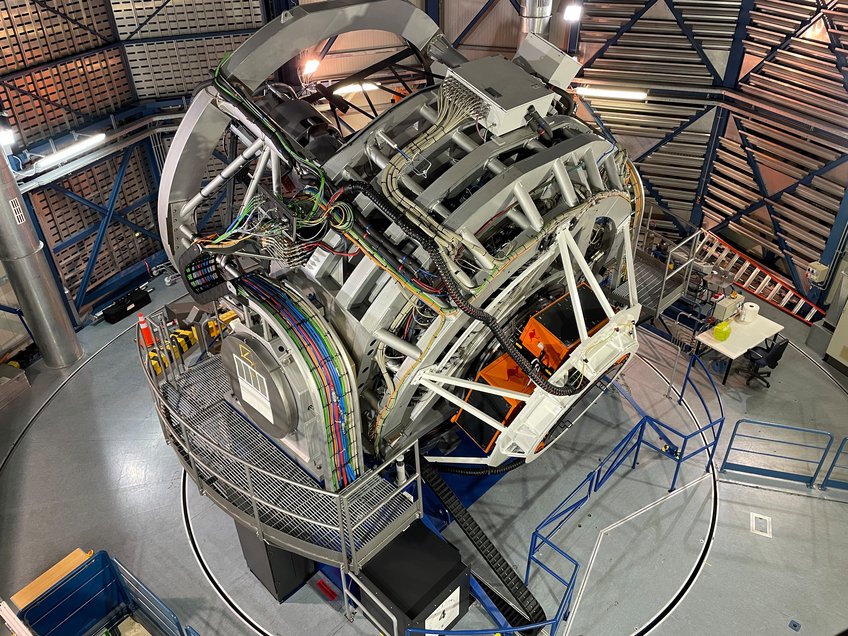First light for the 4MOST spectrograph
New instrument will provide numerous high-resolution spectra, complementing existing data

- First light for the 4MOST spectrograph at ESO’s VISTA telescope
- Key hardware contributions by the Max Planck Institute for Astronomy
- 4MOST will obtain spectra for over 25 million stars, galaxies, and quasars
- Science applications include stellar astrophysics and properties of the Milky Way galaxy
The previous weekend, the 4-metre Multi-Object Spectroscopic Telescope, "4MOST" for short, successfully made its first test observations. 4MOST is an instrument installed on ESO’s 4 meter survey telescope VISTA, which can simultaneously observe ~ 2400 objects within its large field-of-view of 4.2 square degrees. Over the next five years, 4MOST is set to record detailed spectra for more than 25 million astronomical objects, from stars and galaxies to distant quasars. Like most large astronomical instruments, 4MOST is built by a consortium, which in this case is led by AIP Potsdam, and which includes the Max Planck Institute for Astronomy (MPIA).
MPIA has been responsible for instrument control hardware, and also contributed to the high-resolution spectrograph. As is usual when a consortium builds an instrument, MPIA as one of the core consortium members also receives a certain contingent of observing time on 4MOST. MPIA's Maria Bergemann is one of the leaders (Principal Investigator, PI) of the 4MIDABLE-HR spectroscopic survey that will provide high-resolution optical spectra for over 3.6 million stars in the Milky Way galaxy. These stars had already been observed by European and US space-based missions, Gaia, eROSITA, K2 and TESS. 4MIDABLE-HR will also provide the first nearly complete spectroscopy of the southern field to be observed by PLATO exoplanet mission.
Bergemann is an expert on analysing stellar spectra, and she and her group will use these spectra to deduce the chemical abundances of over 20 elements, which represent all the different nucleosynthesis pathways by which stars convert lighter nuclei into heavier ones. The result is bound to have an impact on a whole spread of astrophysical questions: from stellar structure to the evolution of binary stars, the connection between stars and their planets, and the structure and chemical evolution of our home galaxy, the Milky Way.
